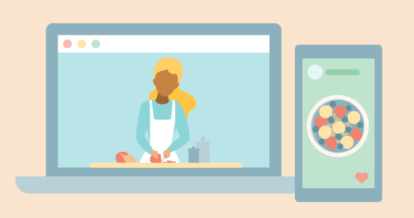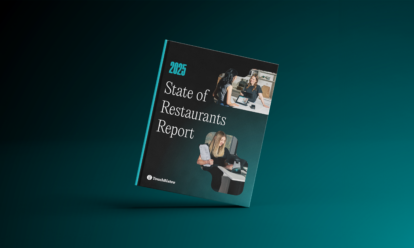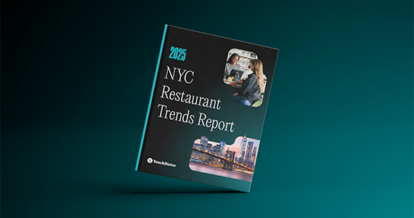In the increasingly competitive restaurant industry, a series of simple mistakes can lead to business-ending catastrophes. There are limitless ways to bleed profit – like overscheduling staff or poor inventory management – but, luckily, your restaurant analytics can easily reveal these gaps to you.
With all the complexities of the business and the never-ending competition out there, it may seem virtually impossible to get – and keep – a restaurant off the ground. But modern restaurateurs have a secret weapon that has never been more abundant: POS data.
With advances in technology, you now have access to a wealth of valuable information about your customers, servers, payments, and more through your POS. This data can help you understand things like business patterns, staff performances, most or least profitable dishes and give you the insights you need to improve in these areas.
All you need to do is understand restaurant analytics! Once you start using data, you can figure out how to apply your discoveries to make your restaurant as hospitable, efficient and profitable as possible.
In this article, we’ll:
- Provide a primer on restaurant analytics
- Discuss the most important areas of your business for which to pull restaurant analytics
- Show you how you can use the data you’ve mined to improve your business and increase revenue
Let’s dive in!
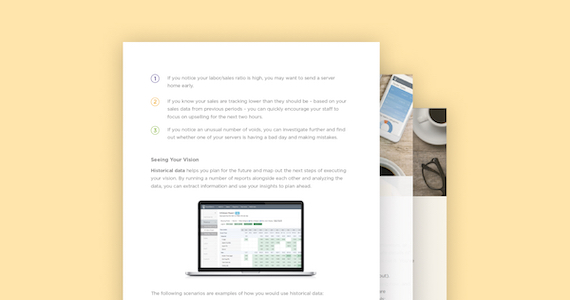
Save money, prevent disasters, and discovers issues before they start.
What Are Restaurant Analytics?
Put simply, restaurant analytics are all the data from your restaurant turned into digestible insights you can use to inform business decisions. If you can measure it, you can improve it, which is why restaurant analytics are so important.
When you take the time to dive into these data points, you get a story of how your restaurant runs. You can find out important information, from how much food is wasted to which staff members are over – or under – performing to what kind of payment method is most popular among your customers. Restaurant analytics come from POS data, which is embedded into every transaction and piece of technology you use to run your restaurant.
As restaurant technology has improved, so has restaurateur’s ability to pull these analytics. Historically, business owners relied on their own observations or hand-written notes to log things like number of dishes ordered, how many tables were served and customer reviews. This would help make decisions about scheduling, food ordering, menu design, and restaurant layout.
While technology will never completely replace the wisdom of experience, it does provide important insights that you can’t get otherwise. With the right POS system, it’s possible for even managers just starting out to gather restaurant analytics that can inform precise decisions that help them find peak efficiency and outstanding customer service.

9 Ways POS Data Can Help Your Restaurant
Once you’ve narrowed down the way(s) you’re going to gather and analyze data, it’s time to think about what you want to learn.
Here are nine areas of your business where restaurant analytics can be be extremely helpful – and how you can use that information to improve your operations!
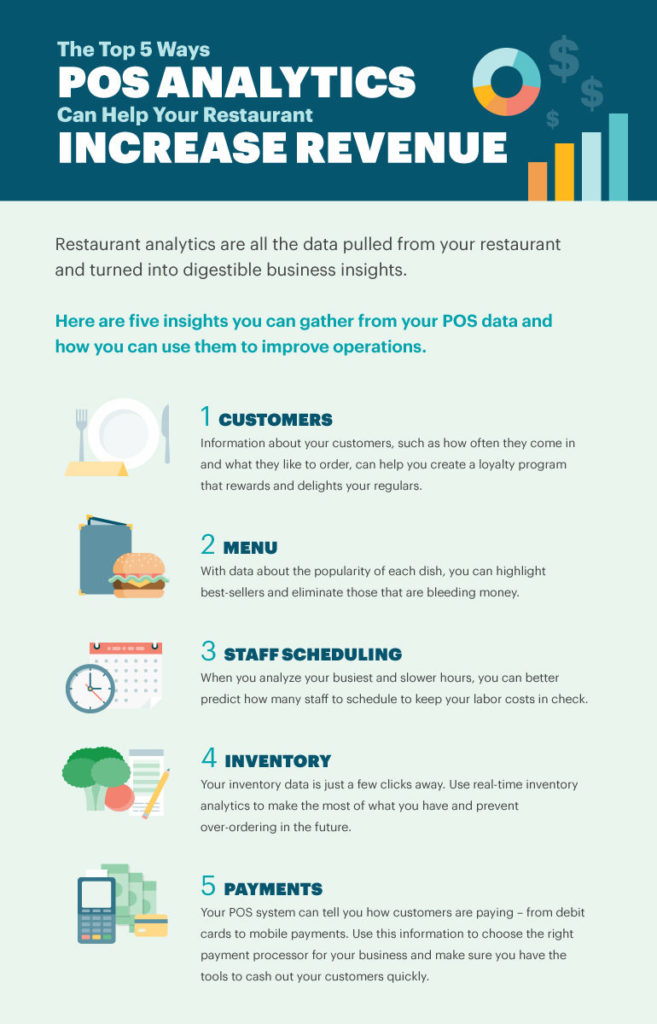
1) Payments
Without accepting payments, you wouldn’t have money to purchase food, pay rent, or fund marketing efforts. Luckily, you can even optimize the payment experience for guests with your analytics! There are a lot of learnings to be found in how you’re accepting payments.
What you can learn from this data:
How are most of your customers paying? If they’re like most modern consumers, they want to whip out a debit/credit card or, increasingly, their phone with mobile payments. You may think you have a good idea about payments in your restaurant, but your POS solution can give you hard figures on exactly how bills are being paid.
What you can do with it:
With complete payment information, you can make sure your restaurant is equipped with the right tools to cash out your customers quickly, easily and exactly the way they want. If most of your customers prefer to pay by debit or credit, you can invest in the right number of terminals and make sure they can pay at the table. Staff can also be trained to be ready with the terminal, especially during lunch rushes. If you notice a trend towards these types of payments, you can also look ahead and start preparing to accept digital payments.
Knowing all of this information on payments will also help inform your decision of payment processor. For example, if you know that most of your diners are college students with basic credit or debit cards, you might not want to pay unnecessary – and higher – flat rates for upgraded cards that aren’t being used at your business.
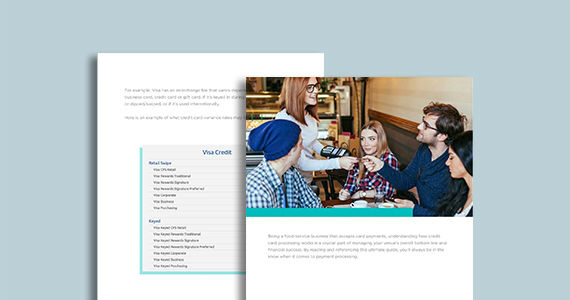
Everything you need to know about credit card processing
2) Customer Insights
Your customers drive your business. The more actionable information you can gather about them, the better! With improved technology, like loyalty programs, you can even start pulling analytics about your customers. What makes them happy? What makes them tick? It’s time to find out – and use that information to improve!
What you can learn from this data:
Want to create a loyal following? Learn everything you can about your customers. One way to easily collect data is to start a loyalty program that can be administered through CRM software. You can often get this as part of your POS solution, making it easier to set up because you don’t have to start from scratch. In no time, you’ll be getting deep insights into the demographics of your regulars, when they visit and what they order.
What you can do with it:
There’s no easier way to delight your customers than by rewarding them for visiting. You can have their favorite dish ready to go when they order ahead, send targeted – and personalized – offers to your diners or offer points that can be redeemed for discounts and free dishes.
3) Discounts, Voids, and Deletions
Discounts and voids are a natural part of the restaurant business, but they don’t have to be just lost dollars. Diving into restaurant analytics around your discounts and voids can help you prevent the same issue in the future.
What you can learn from this data:
Nobody’s perfect, especially during a dinner rush. Mistakes happen, but it’s important to stay on top of the discounts, comps, and voids that your managers and servers put through. Data like this can be very telling about the systems that can be improved.
What you can do with it:
When you know when discounts, comps, and voids are happening, you can take action.
Do you have a staff member who is constantly having to offer discounts? Maybe they’re struggling to deliver a great experience and could benefit from some mentorship. Is one dish constantly being sent back with complaints? It may be time to take it off the menu.
This is one area where the more you know the better – and the more money saved from repetitive voids and discounts.

4) Inventory Control
Does your ideal evening consist of a late night locked in the back room of your restaurant, counting every seed on the sesame buns?
Probably not (if it is, more power to you!). But inventory management is an essential part of running your business. When you use technology to assist with inventory, you also get the added benefit of all the analytics you can pull out that are tied to inventory.
What you can learn from this data:
There’s a reason the old-school way of tracking inventory with a pen, pencil, and piece of paper isn’t the first choice of restaurateurs anymore. It’s more time consuming, you can’t pull analytics as easily, plus you risk losing the information. What happens when you misplace your inventory sheet you spent hours penciling in? Do you remember exactly how many beef patties you needed to order?
With the right inventory system, your POS solution can track every last ounce of ingredients that need to be pitched and make clear what gets tossed the most and the least. When you have more accurate inventory and are able to better predict your food needs, you can save money on wasted food. After all, throwing out unused product that has gone bad is essentially throwing out money.
What you can do with it:
Are you running out of fish by Thursday every week? Are you constantly left with too much parsley? Exact numbers from inventory serve as a window into kitchen operations. Armed with detailed information, you’ll know when to run specials (and on what), how to tweak your menu to make the most of the ingredients you tend to overflow with, or what to cut back on ordering because it’s just not used as much as your chefs believed.
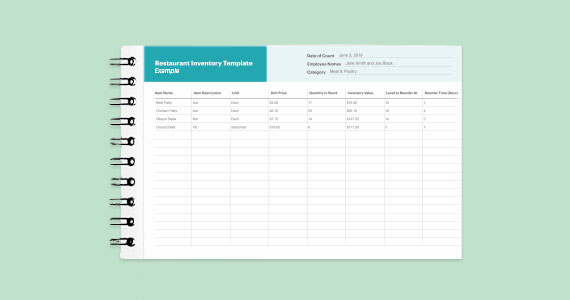
Simplify your inventory counts with our free restaurant inventory template.
5) Staff Performance
Your team members are the faces of your business! They’re the people greeting guests, preparing meals, and serving tables with a smile (hopefully). Having restaurant analytics on your staff performance is the best way to pull actionable training tips and insights. When you know where staff are thriving – and just surviving – you can best help them improve.
What you can learn from this data:
Want to know which servers are selling more wine, desserts, or specials? Who takes the longest to turn their tables? Who gets the best tips? You can get a lot of interesting intelligence on staff performance by collecting data using your POS. You can later use this info to help work with staff on their performance.
What you can do with it:
If you have a few star employees who are outperforming their colleagues, consider putting them in a supervisory role – they may be future manager material if you keep nurturing their natural talent. You could also pair natural high performers with other staffers so they can share their secrets to success.
You may also uncover some deficits that can be addressed with better training. For example, if you notice that your team struggles with upselling across the board, you may want to consider working on that more in-depth with training and onboarding. When you’re able to optimize training and notice any gaps, you can train your staff to sell better and deliver a better experience – better tips for them and a higher average check size for you.
6) Menu
Ah, yes. Your menu! The list of all the dishes that you and your chefs have thoughtfully prepared to share with every guest that walks through the doors. But is every dish good for your business? Your restaurant analytics will reveal that to you.
What you can learn from this data:
Do you know what your best selling dish is? Which one is responsible for the most profit and which ones may not be worth the cost they are to create? Which menu item has the potential to become a cult favorite? You can uncover all of this and more by digging deep into the data.
What you can do with it:
Use the insights from your data to breathe more life into certain dishes by making them specials or training employees to point them out to their customers. Or you might switch gears and remove items that aren’t getting any love in favor of other dishes that more closely resemble your bestsellers. You can also make changes based on emerging menu trends – like vegetarian options growing in popularity – and accurately track if these changes are good or bad.
7) Staff Scheduling
Making schedules is never easy. It’s even worse when your schedules end up being a financial burden on your restaurant. Overschedule your team for the amount of tables served in one night and you’re burning money on labor costs. Underschedule and you risk your bottom line for the night as staff struggle to keep up with the demands.
What you can learn from this data:
It may be a no-brainer that your busiest nights are on the weekend or that things may be particularly dead on a Monday afternoon. But your restaurant’s business patterns likely don’t follow that predictable a schedule daily. The data behind your observations can sometimes surprise you – you may discover that the little rush you get on Wednesday evenings is actually more than what you thought!
What you can do with it:
You can never predict with 100% accuracy how many tables will turn up at a restaurant at any night. But you can use analytics to get pretty close. The last thing you want is for staff to be hanging around with no one to serve or slammed with too many tables to properly manage.
When you review your scheduling analytics in relation to your business patterns, you can better manage your schedules. Look back to see how busy certain holidays actually are to avoid under or overscheduling, or predict how many staff you need to handle the weekend rush. When you have a better understanding of your business patterns, you can schedule shifts more precisely and keep staff costs at a reasonable level. Some systems can go as far as to predict sales based on holidays or weather, giving you even more information to influence your staffing decisions.
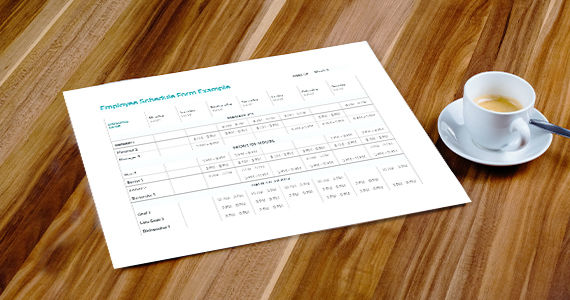
Schedule restaurant employees faster with our free, fillable form.

8) Reviews
Good reviews make you feel, well, great! And bad reviews can be a great learning opportunity. Either way, reviews are packed full of information you can use to improve your bottom line and increase your revenue.
What you can learn from this data:
How much time do you spend browsing online reviews on peer-to-peer sites like Yelp or your reservations platform? How about what people are saying about your restaurant on Instagram or Facebook? Positive or negative, this is free information that is golden. Foodies, in particular, are usually very explicit about what they like and don’t like, so taking time to comb their reviews can be hugely valuable.
What you can do with it:
While not every review can speak for all of your customers, consider the merit of each one and look for ways to tweak your service or menu, especially if you’re getting a lot of the same feedback. When you take consistent feedback and apply it to your business, you can avoid making the same mistake. When you are constantly improving to keep your guests happy, you can bank on repeat business, improved experiences, and a better bottom line.
9) Marketing
What helps raise awareness about your restaurant, drive traffic, and increase sales? Marketing!
For all the above reasons, marketing is great. But it also gives you a lot of valuable information on who your diners are and the best ways to reach them! Make sure the message you’re putting out there gets to the right ears by pulling marketing analytics.
What you can learn from this data:
Using the intelligence from all of your data points, you can create a clear picture of your customer base. This can affect the way you choose to market to them to fill in the down times and make the busy times even more efficient.
What you can do with it:
Target your marketing toward the kind of clientele you want to more business from. For example: Are you looking for more families for Saturday breakfast? Advertise on local family-oriented Facebook pages or local newspapers. Run a coloring contest for kids or offer 2-for-1 kids’ meals before noon. You may want to target other demographics at other times of the week – look for places they hang out and the things they want, (happy hour specials, Taco Tuesdays, etc.). The more you can cater to specific crowds, the better control you’ll have over how many staff to have and the exact inventory you need.
You don’t need to be a full-fledged data scientist to successfully analyze data and run your restaurant at peak efficiency. It’s just a matter of taking the time to dive into your analytics for each section of your business, read through the numbers, and – arguably, the most important – learn from these findings.
You don’t have to make all these changes at once. Take it step by step if you’re feeling overwhelmed with all these categories! It may even be better to focus on one area at a time, so you can fully process your learnings and the changes that can be made in response to them.
It’s also helpful to know that a good POS solution will do most of the heavy lifting in pulling these restaurant analytics for you. Your restaurant is rich with data – all you need is the experience and personal touch to transform that data into an improved operation.
Learn how to make the most of your restaurant reports
Sign up for our free weekly TouchBistro Newsletter




